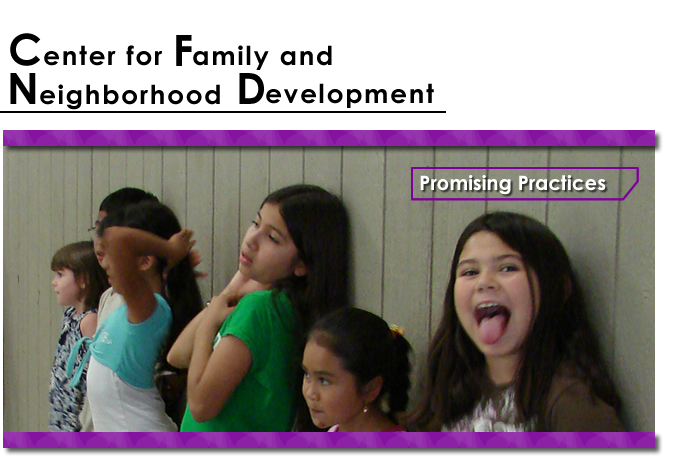Reducing Youth Violence and Crime Promising Practices |
| 01. |
Family Strengthening and Support Services
improve family relations. Parents who identify goals, receive training on child development, and learn how to talk with their kids and solve issues in nonviolent ways enhance their parenting skills. |
| 02. |
Social-Development Strategies teaches children how to resolve problems without using violence. Skills that should be targeted are sharing, helping, waiting and taking turns, teamwork and cooperation. |
| 03. |
Mentoring Programs
develops caring and trustful relationships with at least one adult outside their family. The adult serves as a positive role model and guides the young person’s behavior. |
| 04. |
Changes in Physical and Social Environments
that address the causes of violence.
|
| 05. |
Preschool Programs with Approaches Emphasizing Child-Initiated Activities reduces delinquent activity. Active learning for children through direct, hands on experience with people, objects, events, and ideas. |
| 06. |
Education Services that includes tutoring, homework assistance, and computer assisted instruction. These services improve youth’s performance in all academic subjects. |
| 07. |
After-School and Summer Activities
promotes positive ways youth can spend their time. Youth take part in community service projects, recreational programs, trips, and helping and participating in special events. |
| 08. |
Community Policing/Enhanced Enforcement
reduces substance abuse and related crime. This allows for healthy relationships to be built between youth, their families, and police officers. Law enforcement personnel who participate make a commitment to community, serve as mentors, and give law education presentations to the youth at the same time taking part in recreational activities with them. |
| 09. |
Juvenile Justice Intervention
is a collaboration between highly trained personnel/case managers from the program and juvenile court personnel. They work together to coordinate and monitor services for youth who are involved in the juvenile justice system.
|
| 10. |
Social Support/Counseling Services for Youth and Their Families
are shown to be effective. The support must include family participation. Intensive treatment approach including school, peer, and neighborhood environments have shown to have a positive impact.
|
All of these best practices should incorporate an assessment of the youth’s needs, existing services, and cultural relevance.
* Sources: CASASTART Field Guide 2001, Centers for Disease Control and Prevention (www.cdc.gov/injury), Quantum Opportunities Program Guide to Effective Programs for Children and Youth (www.childtrends.org/lifecourse/programs/quantumopportunities program.htm), National Youth Violence Prevention Resource Center Effective Types of Youth Violence Programs, Incredible Years Training Series Program Objectives |

